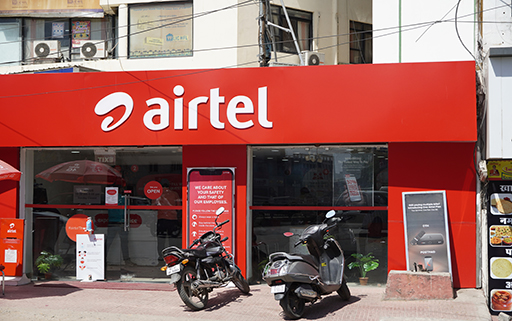Our Big Prediction
This Could be One of the Exciting Opportunities for Investors
- Home
- Outlook Arena
- What is Rights Issue?
What is Rights Issue?
Issuing rights shares is another weapon in the company's armoury for fundraising. If you think that initial public offerings (IPOs) are the only way a company can raise funds, you can't be more wrong.
By issuing the rights shares, the company entitles or gives right to its existing shareholders to buy new shares of a company at a discounted price.
Right shares are credited to existing shareholders' demat accounts in proportion to their existing shareholding. This credit suggests only a right to apply for the shares at a discounted price. It is not an allotment of shares, so a shareholder will have to apply to get shares at discounted prices.
Thus, existing shareholders and not the public, in general, can buy the rights shares offered.
However, it is noteworthy that the existing shareholders can transfer their rights to other people. This process is called renunciation of right shares.
Right shares are traded for transfer on a stock exchange like any other equity shares.
Issuing the right shares is an easy way of fundraising because it involves fewer regulations. However, issuing the right shares gives out an impression that the company is facing a crisis.
Buying the right shares can be a good opportunity for increased investment in a company at discounted prices.
How a rights issue works
Imagine you own 100 shares in a penny stock called ABC Ltd, which is currently trading at Rs 10 per share. The company wants to raise more money to fund its expansion plans, so it decides to do a rights issue. It offers existing shareholders the right to buy one new share for every two shares they already own, at a discounted price of Rs 8 per share.
In your case, as you hold 100 shares, you are entitled to buy 50 new shares at the discounted price of Rs 8 each. To exercise this right, you need to pay Rs 400 (50 shares x Rs 8 per share).
Now, there are a few things you can do with these rights. You can either:
- Take up your rights and buy the new shares. In this case, you would have a total of 150 shares in ABC Ltd (100 existing shares + 50 new shares).
- Sell your rights in the market. This is like selling an option to buy the new shares at a discounted price. If the market value of your rights is higher than the cost of exercising them, you could make a profit by selling them.
- Ignore your rights and let them expire. If you choose not to take up your rights or sell them, they will expire and you will not be able to buy the new shares at the discounted price.
Some Pros and Cons...
To be eligible for a rights issue, shareholders must own the company’s shares as on record date. This is the date on which the company determines who its shareholders are, based on its share register. If you buy shares after the record date, you will not be eligible for the rights issue.
If a rights issue is oversubscribed, it can be a positive signal to the market that there is strong demand for the company's shares.
In rights issue, shareholders also have the option to take up their rights, sell them or let them expire, which provides them with some flexibility.
However, the announcement of a rights issue can sometimes be perceived as a negative signal by the market, especially if it is seen as a sign of financial distress or a lack of confidence in the company's ability to generate cash internally.
Also, the discounted price at which the new shares are offered can reduce the value of existing shareholders' investments.
It’s important for shareholders to carefully consider the potential benefits and drawbacks before deciding whether to exercise their rights.
Since you're interested in tracking rights issues, check out the list of companies which have announced rights issue recently.
![]() My Top 5 Takeaways from the SEBI Board Meeting
My Top 5 Takeaways from the SEBI Board Meeting
Oct 3, 2024
From faster rights issue to a new asset class, here are the top 5 highlights from SEBI's board meet.
![]() This Undervalued Stock is Set to Declare Dividend in May 2023
This Undervalued Stock is Set to Declare Dividend in May 2023
Mar 31, 2023
This company has had 3 rights issues and around 10 bonus shares in the past 35 years. What's more, the dividend payout has only grown over the years.
![]() Bharti Airtel's Humongous Rights Issue to Open on 5 October. Key Points Investors Should Know
Bharti Airtel's Humongous Rights Issue to Open on 5 October. Key Points Investors Should Know
Sep 23, 2021
Shares of Bharti Airtel trade near record high ahead of rights issue.
![]() Tata Consumer Rights Issue: Will Two Big Acquisitions by the Tata Group Company Pay-Off?
Tata Consumer Rights Issue: Will Two Big Acquisitions by the Tata Group Company Pay-Off?
Jan 15, 2024
Tata Consumer's rights issue plan for fundraising comes after big acquisitions of Capital Foods and Organic India.
![]() Should You Subscribe to Suzlon's Rights Issue as the Company Charts a Recovery Path?
Should You Subscribe to Suzlon's Rights Issue as the Company Charts a Recovery Path?
Oct 11, 2022
Suzlon is going on a deleveraging spree with the recent rights issue and a Rs 28 bn refinancing from REC.
Wind energy: To be or not to be
Nov 11, 2008
India's leading wind energy equipment major Suzlon has been in news of late, not really for the right reasons. The company has faced quality issues at its installations in the US and then it shelved the rights issue owing to poor conditions in the financial markets. The company's aggressive expansion plans are therefore expected to take a hit in the short to medium term.






